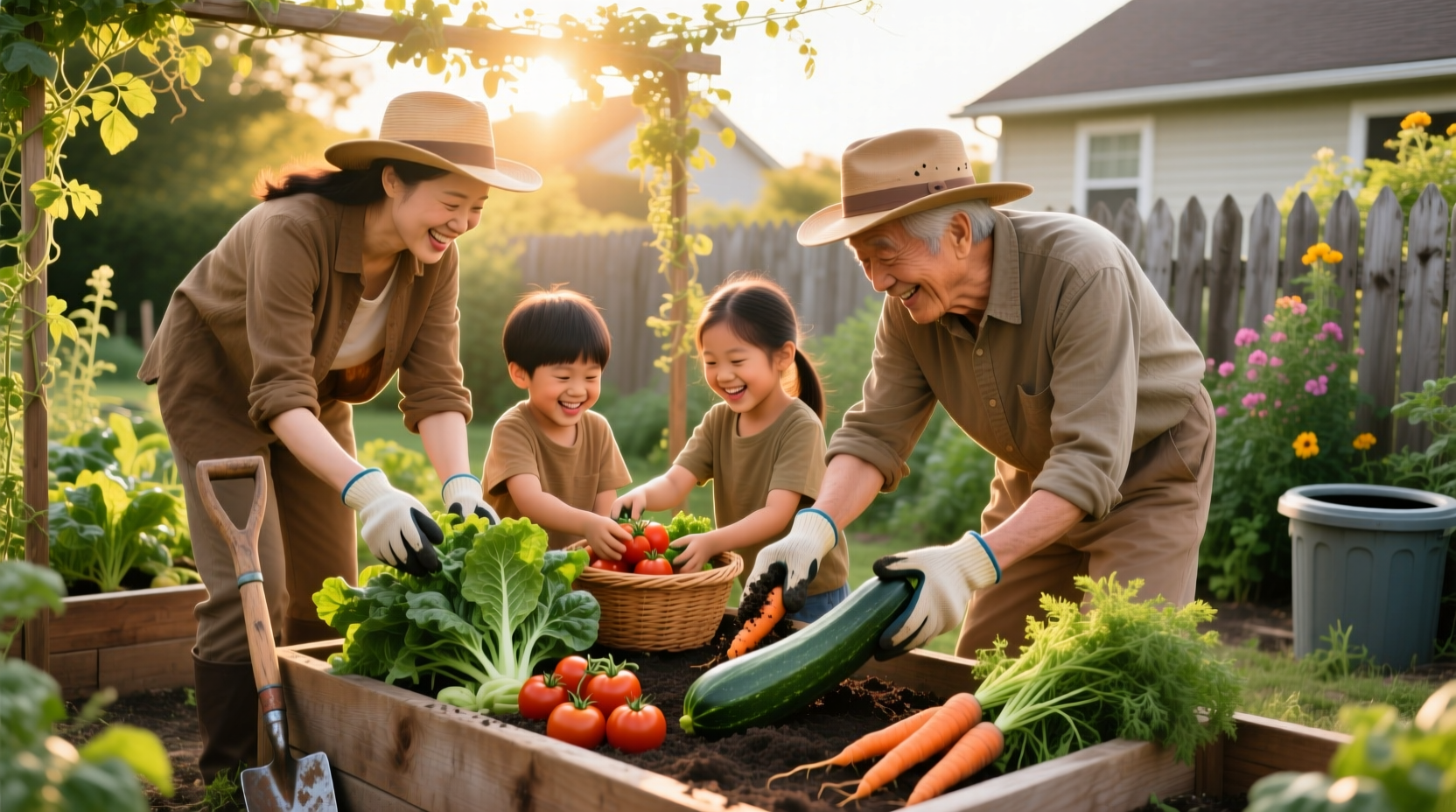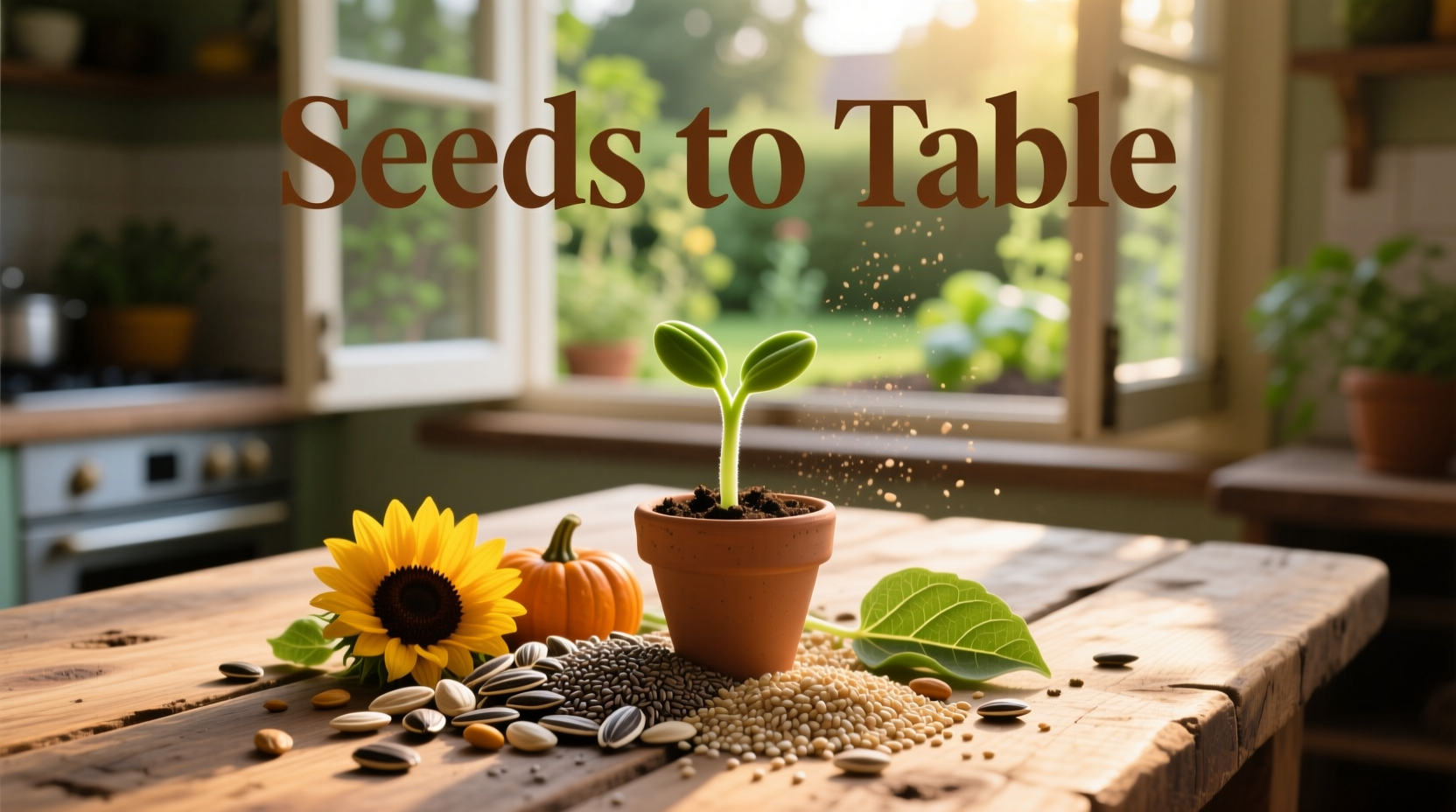Imagine harvesting vegetables from your backyard garden in the morning and serving them for dinner that same evening. This isn't just a fantasy—it's the powerful reality of the seeds to table approach that's transforming how people connect with their food. By understanding and implementing this complete food cycle, you'll gain control over what goes into your body, reduce your environmental footprint, and experience flavors that supermarket produce simply can't match.
Your Complete Journey from Planting to Plate
Starting Your Seeds: The Foundation of Flavor
Choosing the right seeds sets the stage for your entire culinary experience. Heirloom varieties often contain 20-30% more nutrients than modern hybrids according to research from the USDA Agricultural Research Service. When selecting seeds, consider your local climate, soil conditions, and the specific flavors you want to develop in your kitchen. Start small with fast-growing crops like radishes or lettuce that show results in 30 days, building your confidence before tackling longer-term projects like tomatoes or root vegetables.

Understanding Growth Timelines for Maximum Nutrition
The journey from seed to harvest follows specific biological timelines that directly impact nutritional value. Here's how common vegetables progress through their growth cycles:
| Vegetable | Germination Time | Days to Harvest | Nutrient Peak Window |
|---|---|---|---|
| Leafy Greens | 5-7 days | 30-45 days | 24-48 hours after harvest |
| Tomatoes | 7-10 days | 60-80 days | 3-5 days after vine ripening |
| Carrots | 10-14 days | 70-80 days | Immediately after harvesting |
| Beans | 8-10 days | 50-60 days | 2-3 days after picking |
Research from Cornell University's College of Agriculture and Life Sciences shows that spinach loses 47% of its folate content within eight days of harvest when stored conventionally. This dramatic nutrient decline explains why home-harvested produce delivers significantly more nutritional value.
Harvesting at the Perfect Moment
Timing your harvest correctly makes all the difference in flavor intensity and nutritional content. Most vegetables reach peak flavor and nutrient density in the early morning after the dew has dried but before the sun becomes intense. For leafy greens, harvest when they've developed 4-6 true leaves. Root vegetables should be harvested when their shoulders begin to show above the soil line. The key principle: harvest when each vegetable reaches its biological maturity point, not when it simply looks large enough.
Preservation Techniques That Maintain Quality
When you can't eat your harvest immediately, proper preservation maintains nutritional integrity. The National Center for Home Food Preservation recommends these methods based on vegetable type:
- Leafy greens: Store in airtight containers with a damp paper towel for up to 5 days
- Root vegetables: Keep in cool, dark, humid conditions (32-40°F with 95% humidity)
- Tomatoes: Never refrigerate—store at room temperature away from direct sunlight
- Herbs: Treat like flowers—trim stems and place in water at room temperature
Transforming Harvest into Culinary Masterpieces
The final stage of the seeds to table journey transforms your harvest into nourishing meals. Professional chefs emphasize these techniques for maximizing flavor:
- Wash produce just before use to prevent premature spoilage
- Use minimal cooking methods like steaming or quick sautéing to preserve nutrients
- Pair complementary flavors grown in the same season (e.g., tomatoes with basil)
- Create zero-waste meals by using vegetable scraps for stocks and infusions
A 2023 study published in the Journal of Food Science found that home-grown tomatoes contained 55% more vitamin C and 60% more lycopene than supermarket equivalents. This nutritional advantage directly translates to more vibrant flavors and health benefits.
Overcoming Common Challenges
Every gardener encounters obstacles. Urban dwellers with limited space can grow productive container gardens using 5-gallon buckets. Those with poor soil can implement raised bed gardening with imported topsoil. Season extension techniques like cold frames allow harvesting 4-6 weeks beyond the typical growing season. The key is adapting the seeds to table philosophy to your specific circumstances rather than abandoning it when perfect conditions don't exist.
The Evolution of Seeds to Table Movement
What began as Victory Gardens during World War I has evolved into today's sophisticated local food movement. The timeline shows significant milestones:
- 1917-1919: 5 million Victory Gardens produced 1.2 billion pounds of food in the US
- 1970s: Back-to-the-land movement revived home gardening
- 2009: White House vegetable garden reestablished, inspiring nationwide interest
- 2020: Pandemic gardening surge increased seed sales by 300% according to National Gardening Association
- Present: Integration of technology with smart gardening systems and community sharing apps
Practical Implementation Strategies
Start your seeds to table journey with these actionable steps:
- Assess your available space (balcony, windowsill, backyard)
- Select 3-5 easy-to-grow crops suited to your climate
- Start seeds indoors 4-6 weeks before last frost date
- Create a simple harvesting schedule based on growth timelines
- Plan 1-2 recipes each week featuring your harvest
- Track your progress and adjust for next season
Remember that even a single pot of herbs on your windowsill represents a meaningful step toward food independence. The seeds to table philosophy isn't about perfection—it's about building a more conscious relationship with your food, one harvest at a time.
How much time does a beginner need to maintain a seeds to table garden?
Beginners typically spend 2-4 hours weekly on a small home garden (10-15 square feet). This includes 30 minutes daily for watering during peak season and 1-2 hours weekly for maintenance tasks. Container gardens require even less time, making them ideal for busy schedules.
Can seeds to table practices work in apartments with no outdoor space?
Yes, many apartment dwellers successfully implement seeds to table practices using container gardening. Herbs, lettuce, and cherry tomatoes thrive in pots on windowsills or balconies. Vertical gardening systems maximize limited space, and some communities offer shared garden plots. Even growing sprouts indoors counts as participating in the movement.
What's the most significant nutritional benefit of seeds to table eating?
The primary nutritional benefit is significantly higher vitamin and antioxidant content. Produce begins losing nutrients immediately after harvest, with some vegetables losing up to 50% of their vitamin C within a week. Home-harvested produce consumed within hours retains maximum nutritional value, providing more health benefits than store-bought equivalents.
How does seeds to table impact food waste?
Seeds to table practices reduce food waste by 70-90% compared to conventional shopping. When you grow your own food, you harvest only what you need, when you need it. Additionally, gardeners develop creative ways to use entire plants (like cooking beet greens or making pesto from carrot tops), minimizing waste throughout the process.











 浙公网安备
33010002000092号
浙公网安备
33010002000092号 浙B2-20120091-4
浙B2-20120091-4